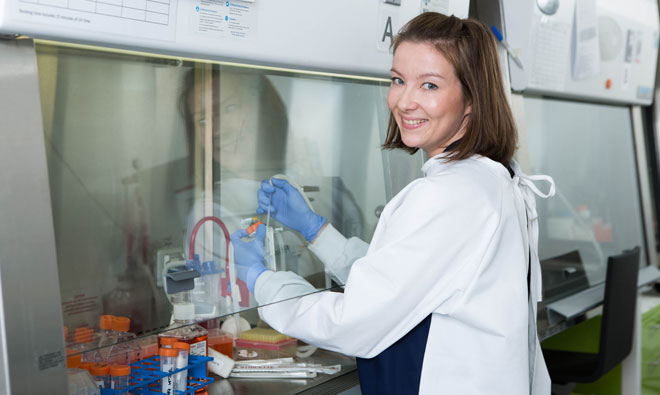Leukaemia study takes aim at therapy resistant proteins
Posted: 28 July 2016 | Caleb Radford, The Lead | No comments yet
Assessing a patient’s levels of the P-glycoprotein soon after they start receiving Glivec therapy will help to predict that patient’s long-term response to the leukaemia drug, according to new research from SAHMRI and the University of Adelaide…


Dr. Eadie in the lab at SAHMRI
Assessing a patient’s levels of the P-glycoprotein soon after they start receiving Glivec therapy will help to predict that patient’s long-term response to the leukaemia drug, according to new research from South Australia.
Researchers from the South Australian Health and Medical Research Institute (SAHMRI) and the University of Adelaide found that having multiple polymerase chain reactions (PCRs) tests allowed them to calculate an increase in P-glycoproteins.
P-glycoproteins are a drug resistant protein that pumps biological treatments such as Imatinib (Glivec) out of leukaemia cells.
Lead author Dr Laura Eadie said they found the greater the increase in P-glycoprotein in patients, the greater the risk of them becoming resistant and not responding to the leukaemia drug.
“Our new test is looking at the expression levels and how much P-glycoprotein is present at diagnosis and then again three weeks later. Then we compared the difference between them at those two standpoints.
“Previously people have either just looked at one time point – at diagnosis or at 12 months after they began therapy.”
Dr Eadie said everyone has P-glycoprotein in their cells but her research found that the levels increase in response to the leukaemia drugs that patients are taking.
Dr Eadie said about 20 per cent of patients had a poor response to Glivec, which reduces their chances of survival.
“We are all about personalising the therapy approach but now it’s not just the one drug for every patient, it’s personalising the treatment strategy dependent on the biology of their leukaemia,” she said.
Dr Eadie said she hopes this new test would allow doctors around the world to change treatment strategies for patients with chronic myeloid leukaemia at high risk of developing a resistance to Glivec.
Without treatment patients have about five years to live but could live out their lifespan if they avoid the development of therapy resistance.
Glivec is the oldest treatment for chronic myeloid leukaemia and is the most prescribed therapy. It is well known for having fewer side effects.
The results of this research are published online ahead of print in the international journal Leukemia.
SAHMRI opened in late 2013 and is in the new Adelaide BioMed City precinct, a $3 billion tripartite health hub comprising a soon-to-be-completed major hospital, research centres and educational institutions.
SAHMRI is home to about 600 researchers working across seven themes: Heart Health; Infection & Immunity; Aboriginal Health; Mind & Brain; Cancer; Healthy Mothers, Babies & Children; and, Nutrition & Metabolism.
Related topics
Polymerase Chain Reactions (PCRs)
Related conditions
Leukaemia
Related organisations
Adelaide University, SAHMRI



